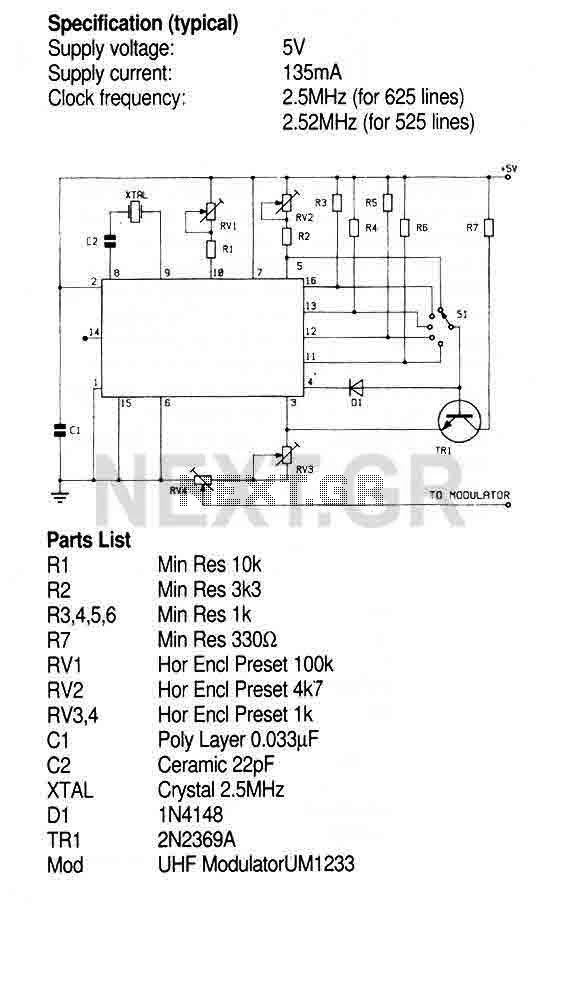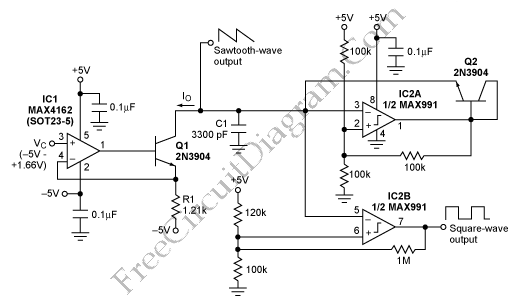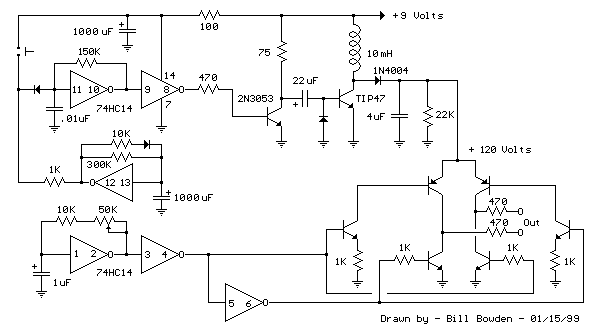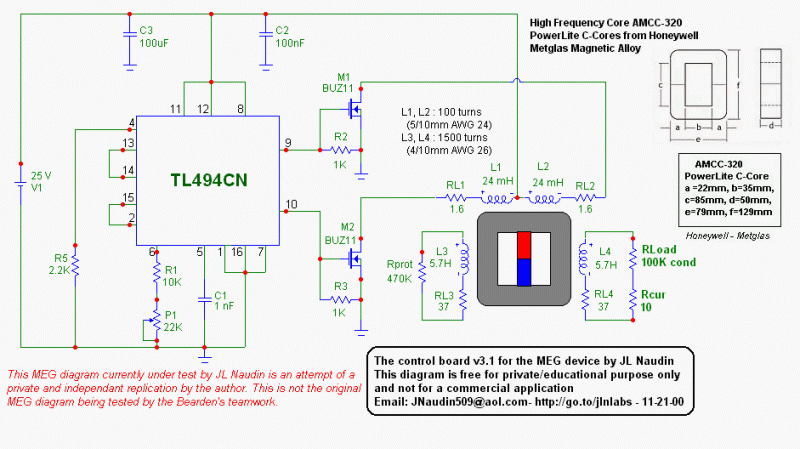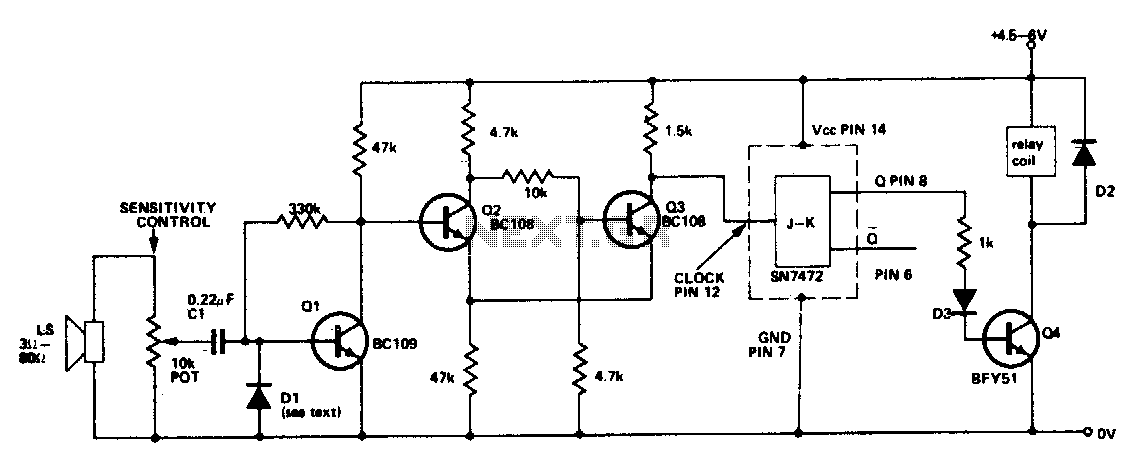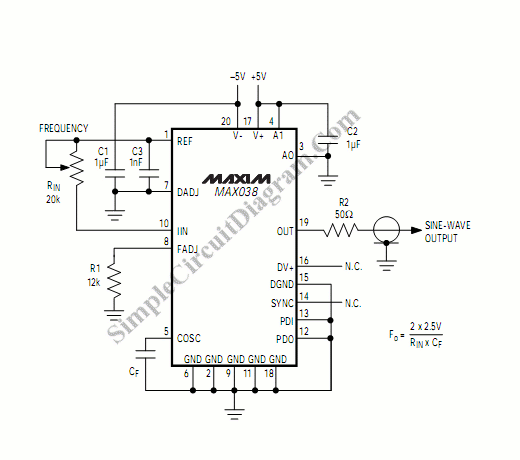
Rain Sound Effects Generator
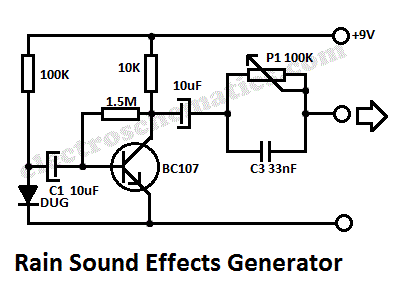
This rain sound effects generator circuit simulates the sound of rain and can be utilized in electronic music and radio shows. The noise source employs a germanium diode that is directly polarized and subsequently amplified by a single-stage amplifier to achieve an acceptable audio level. A high-pass filter with an adjustable lower limit, constructed with components P1 and C3, facilitates coverage of the complete range of sound effects from light rain to torrential downpours. The circuit consumes low current, allowing for operation from a 9V battery. Instead of the BC107 transistor, any NPN transistor can be used.
The rain sound effects generator circuit is designed to produce a realistic simulation of rain sounds, making it a valuable tool for musicians, sound designers, and radio producers. The core of the circuit is the germanium diode, which generates noise when forward-biased. This noise serves as the primary audio source. The diode's characteristics contribute to the unique tonal quality of the generated sound, which can be fine-tuned through the subsequent amplification stage.
The single-stage amplifier is configured to boost the audio signal to a usable level, ensuring that the output is suitable for further processing or direct playback. The choice of an NPN transistor, such as the BC107 or an equivalent, allows for flexibility in component selection while maintaining performance. The amplifier's gain can be adjusted to accommodate different sound environments and requirements.
The high-pass filter, formed by the variable resistor P1 and capacitor C3, plays a crucial role in shaping the output sound. By adjusting P1, users can modify the filter's cutoff frequency, enabling a transition from softer rain sounds to more intense downpours. This adaptability allows for a wide range of sound effects to be produced, catering to various artistic needs.
Powering the circuit with a 9V battery ensures portability and ease of use in different settings, from studio environments to live performances. The low current consumption is advantageous, prolonging battery life and making the circuit suitable for extended use without frequent replacements. Overall, this rain sound effects generator circuit exemplifies a practical application of basic electronic principles to create engaging auditory experiences.This rain sound effects generator circuit simulates the rain noise and may be used in the field of electronic music and radio shows. As a noise source we use a germanium diode that is directly polarized then is amplifier by a single stage amplifier in order to obtain an acceptable audio level.
A high-pass filter with an adjustable lower limit, buil t with P1 and C3, allow coverage of the entire range of sound effects from light rain and to torrential rain. The current consumption is low so you can use a 9V battery. Instead of BC107 you can use any NPN transistor. Be the first of your friends to get free diy electronics projects, circuits diagrams, hacks, mods, gadgets & gizmo automatically each time we publish.
Your email address & privacy are safe with us ! 🔗 External reference
The rain sound effects generator circuit is designed to produce a realistic simulation of rain sounds, making it a valuable tool for musicians, sound designers, and radio producers. The core of the circuit is the germanium diode, which generates noise when forward-biased. This noise serves as the primary audio source. The diode's characteristics contribute to the unique tonal quality of the generated sound, which can be fine-tuned through the subsequent amplification stage.
The single-stage amplifier is configured to boost the audio signal to a usable level, ensuring that the output is suitable for further processing or direct playback. The choice of an NPN transistor, such as the BC107 or an equivalent, allows for flexibility in component selection while maintaining performance. The amplifier's gain can be adjusted to accommodate different sound environments and requirements.
The high-pass filter, formed by the variable resistor P1 and capacitor C3, plays a crucial role in shaping the output sound. By adjusting P1, users can modify the filter's cutoff frequency, enabling a transition from softer rain sounds to more intense downpours. This adaptability allows for a wide range of sound effects to be produced, catering to various artistic needs.
Powering the circuit with a 9V battery ensures portability and ease of use in different settings, from studio environments to live performances. The low current consumption is advantageous, prolonging battery life and making the circuit suitable for extended use without frequent replacements. Overall, this rain sound effects generator circuit exemplifies a practical application of basic electronic principles to create engaging auditory experiences.This rain sound effects generator circuit simulates the rain noise and may be used in the field of electronic music and radio shows. As a noise source we use a germanium diode that is directly polarized then is amplifier by a single stage amplifier in order to obtain an acceptable audio level.
A high-pass filter with an adjustable lower limit, buil t with P1 and C3, allow coverage of the entire range of sound effects from light rain and to torrential rain. The current consumption is low so you can use a 9V battery. Instead of BC107 you can use any NPN transistor. Be the first of your friends to get free diy electronics projects, circuits diagrams, hacks, mods, gadgets & gizmo automatically each time we publish.
Your email address & privacy are safe with us ! 🔗 External reference
